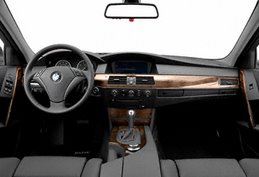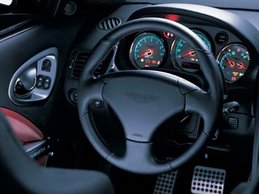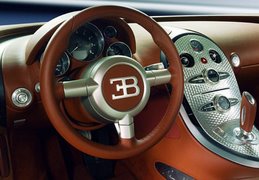 Bentley Continental Flying Spur - A case in point is this new Bentley Continental Flying Spur. Bentley has been owned by the Volkswagen Group since 1999, and the Flying Spur is the second Bentley created since the VW purchase. The first was the wildly successful Continental GT, a two-door coupe that was introduced last year and is selling nearly 5000 copies around the world.
Bentley Continental Flying Spur - A case in point is this new Bentley Continental Flying Spur. Bentley has been owned by the Volkswagen Group since 1999, and the Flying Spur is the second Bentley created since the VW purchase. The first was the wildly successful Continental GT, a two-door coupe that was introduced last year and is selling nearly 5000 copies around the world.Both vehicles are based on the Volkswagen Phaeton, the über -sedan that has drawn so few buyers it’s being withdrawn from the U.S. market. That failure, however, is no reflection on the car’s mechanical underpinnings, which are common with the two Bentleys.
Power comes from a turbocharged version of the W-12 engine used in the top-of-the-line Phaeton and Audi A8. Under the influence of 10.1 pounds of boost pressure, this 6.0-liter engine develops 551 horsepower at 6100 rpm and 479 pound-feet of torque, which starts at a low 1600 rpm. The engine-management computer regulates this boost pressure to keep peak torque unchanged all the way to 5100 rpm, probably to avoid stripping the teeth off the gears in the six-speed ZF transmission. With a stronger gearbox, the engine could probably muster another 100 pound-feet without difficulty.
The exception is the Mercedes S600. The last-generation big Benz edges the Bentley by a few 10ths to 60 mph
 and by 0.6 second in the quarter. The higher-performing AMG version of this car, the S65, is quicker still, and both these Benz luxo-sedans feel even more responsive than the Flying Spur because they weigh some 800 pounds less and have a torque advantage of more than 100 pound-feet.
and by 0.6 second in the quarter. The higher-performing AMG version of this car, the S65, is quicker still, and both these Benz luxo-sedans feel even more responsive than the Flying Spur because they weigh some 800 pounds less and have a torque advantage of more than 100 pound-feet.Tires that can survive a near-200-mph pace while supporting a vehicle with a laden weight of nearly three tons are necessarily rather stout and usually deliver an unforgiving ride. The Yokohama Advan Sports on the Flying Spur, however, collaborate with the air springs and computer-controlled shock absorbers to deliver a comfortable, quiet ride on good asphalt pavement. Road noise does become more prominent on concrete freeways, and the tires won’t absorb every little bump and divot the car encounters. But the ride will not be a shock to anyone who has spent time in high-performance sedans. And wind noise is exceptionally low. At 100 mph, the driver can converse with rear-seat passengers without anyone raising a voice.
Of course, the Flying Spur will spend the vast majority of its time in workaday urban and suburban driving, where its occupants will be more concerned with comfort, utility, and luxury amenities than awe-inspiring speed. From the driver’s vantage, the Bentley delivers on these fronts. The seat is multifariously adjustable, well shaped, and padded. The driving position is excellent, as is all-around visibility.
Just about every interior surface, including the headliner, is leather lined and beautifully fitted. The steering wheel alone requires five hours of hand stitching. The wood veneers are mirror-matched, meaning that each wooden panel is a mirror image of its opposite on the other side of the car.
The main reason to choose the Flying Spur over the two-door Continental GT is to get a back seat useful to adults, and space is certainly generous back there. Headroom and legroom are
 immense, with nearly six inches between the headliner and the scalp of an average adult male. However, the seat cushion is surprisingly low and short, so you end up with most of your weight on your behind. In such a cavernous compartment, a longer and higher rear seat would make better use of the space.
immense, with nearly six inches between the headliner and the scalp of an average adult male. However, the seat cushion is surprisingly low and short, so you end up with most of your weight on your behind. In such a cavernous compartment, a longer and higher rear seat would make better use of the space.We have a few other nits to pick. In a $170,000 car, it would be nice to have a DVD-based nav system rather than the CD-based one that requires shuffling discs during a long trip. We’d also expect at least the availability of satellite radio and a rear-compartment video player.













No comments:
Post a Comment